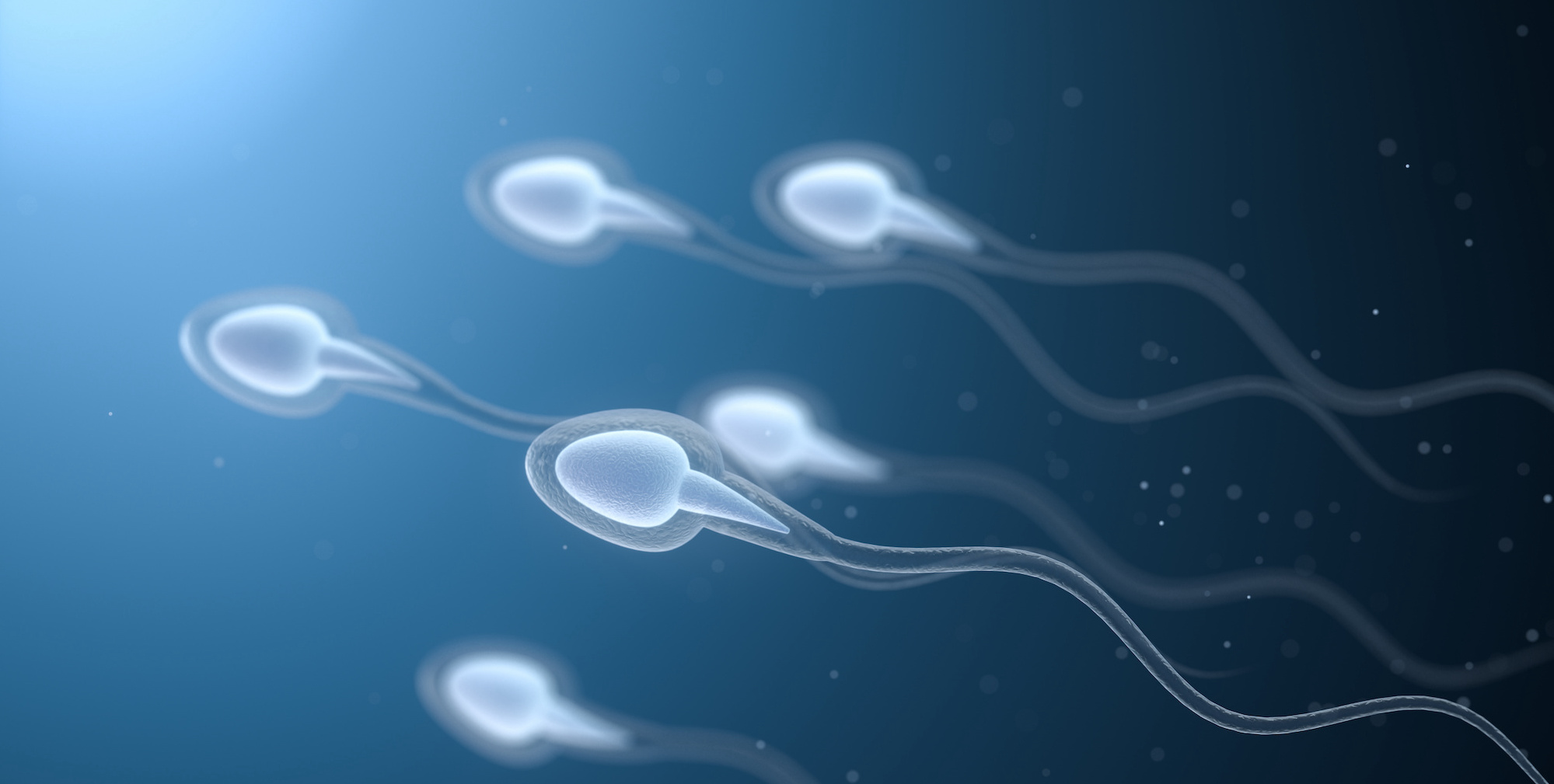Testicular Sperm Extraction (TESE) for Azoospermia Male Infertility
TESE for azoospermia at a glance
- Sperm extraction procedures are performed to treat a male infertility condition known as azoospermia, which is the absence of sperm in semen due to obstructions or low sperm production.
- This procedure can be performed prior to or after a partner’s egg retrieval cycle for intracytoplasmic sperm injection (ICSI) during in vitro fertilization (IVF), where the retrieved sperm is injected into a female’s egg for fertilization.
- We recommend these procedures be performed prior to an egg retrieval to make sure there is sperm available for fertilization.
- None of the extraction methods will get enough sperm to make intrauterine insemination (IUI) possible.
- There are several methods of sperm extraction, including TESE and microTESE, which extract sperm through a small incision in the testes, and TESA, PESA and MESA, which use a needle to aspirate sperm from the testes or epididymis.
- Most sperm extraction procedures are noninvasive procedures that involve little risk and can be performed in a physician’s office or in an operating room.
- With the advancement of reproductive technology, microsurgical methods have become the optimal practice for sperm extraction due to higher retrieval rates and better precision.
What is TESE for azoospermia (also obstructive azoospermia)?
Infertility affects both men and women, with male factors contributing for nearly half of all cases. Male infertility can be caused by genetics, environment, hormonal disorders, injury, prior groin surgery or illness. The most common factors relate to low sperm production, dysfunctional sperm or obstructions that prevent the release of sperm in ejaculation.
TESE as a male infertility treatment
Testicular sperm extraction (TESE) is a procedure where a doctor makes one or several small incisions in the testicular tissue to extract sperm. It can be performed both in a physician’s office with a nerve block anesthetic or in an operating room with general anesthesia. The various types of TESE and when they are used are described below.
Testicular sperm extraction can be a way to treat a male infertility condition called azoospermia, which is the absence of sperm in semen due to obstructions (obstructive azoospermia) or little to no sperm production (nonobstructive azoospermia). TESE can be timed with a female partner’s egg retrieval, and patients often cryopreserve (freeze and store) sperm to use for fertility treatments such as IVF with ICSI.
TESE instead of vasectomy reversal
Men who have had a vasectomy and want to impregnate their partner can choose testicular sperm extraction or have a vasectomy reversal surgery. Vasectomy reversal reconnects the vas deferens duct, which moves sperm to the penis for ejaculation, that a vasectomy disconnected.
Vasectomy reversal may be a good option for couples in which the vasectomy was recently done and for those in which the female is relatively young. We will discuss this option with the couple so they can determine if vasectomy reversal or TESE with ICSI and IVF is best for them.
Interested in learning more?
Male factors of infertility are more prevalent than most people think. Learn about causes, signs and the treatments we offer.
Male infertility
Diagnosing azoospermia
Tests to evaluate male fertility include blood tests to check for genetic conditions and hormone issues or an ultrasound of the scrotum to check for abnormalities in the veins or vessels.
The most common test for male infertility is a semen analysis, which examines several elements of the sperm relating to quantity and quality. These include volume or amount of semen, sperm count, morphology (the size and shape) and motility (the movement of the sperm). Depending on the results of this analysis, each characteristic can determine the male’s ability to reproduce.
Microscopic testicular sperm extraction (microTESE) to treat male infertility
MicroTESE is a more comprehensive TESE procedure that involves microscopic evaluation and precision to retrieve sperm directly from the male’s testicles (testes). It is recommended for men with nonobstructive azoospermia to make treatments like IVF effective.
In this surgery, general anesthesia is administered to the patient and a doctor performs the procedure using an operating microscope. The doctor makes a small cut in the scrotum to examine seminiferous tubules under microscopic imaging and identifies which tubules are more likely to contain sperm. This selective process improves the rate of retrieval and allows for less tissue to be removed, resulting in less damage to the testicles.
Overall, microTESE compared to TESE is more accurate and recovers a higher amount of sperm. However, microTESE’s retrieval rates fluctuate around 40%-60%, so there is still a chance that no sperm will be extracted.
Related reading: Wendy assumed she was the cause of infertility.
Possible risks of TESE and microTESE procedures
Like other surgical procedures, risks include infection, bleeding and pain or discomfort. Damage to the vessels is still a possibility but isn’t common. Pain medication is typically prescribed, and sex with ejaculation and masturbation are prohibited for at least one week following the surgery. The likelihood that either procedure would result in severe damage to the testicles is low, and most patients are able return home that same day.
Testicular sperm aspiration (TESA) vs percutaneous epididymal sperm aspiration (PESA)
As an alternative option to TESE, doctors may recommend testicular sperm aspiration (TESA) to azoospermia patients to treat infertility. Like TESE, TESA is performed to retrieve sperm from the testis and can be conducted using a local anesthetic or sedation. However, TESA is performed by inserting a needle into the testis to remove fluid and tissue rather than through a small incision. In a lab, the sperm is extracted from the fluid obtained and is injected directly into a female egg through ICSI.
Percutaneous epididymal sperm aspiration (PESA) is another sperm aspiration procedure that also uses a needle, pulling sperm and fluid from the epididymis, a tube attached to each testicle where sperm cells mature. Embryologists extract the sperm from the fluid and store it for use later. PESA is recommended for men with obstructive azoospermia, where sperm is produced but unable to bypass the epididymis.
Microepidydimal sperm aspiration (MESA) is a developed aspiration technique that uses magnification imaging to locate the best areas of the epididymis for sperm retrieval. This is also used for men with obstructive azoospermia.
What are the risks of TESA, PESA and MESA?
The risks are low with these procedures, though some do still occur. The main risk involves puncturing a vessel and damaging seminiferous tubules, leading to hemorrhage. Infection and swelling may also occur.
With the improvement of reproductive technology and research, better and more accurate methods have emerged to retrieve sperm. Microsurgical practices have become more widely used and identified by scientists and reproductive experts as the optimal method of sperm extraction with lower risk and higher retrieval rates.
Which procedure is better for TESE?
These sperm retrieval procedures are beneficial in that they aren’t complex and don’t involve comprehensive prep work or complicated surgical instruments. They are minimally invasive, and the risks are low. Knowing which option is the right option depends on the male’s diagnosis and situation.
The disadvantage with TESA and PESA is that in some cases the process doesn’t extract enough sperm. In men with nonobstructive azoospermia, they may fail to recover any sperm at all. In this instance, a testicular biopsy is needed.
TESE and microTESE are great options for nonobstructive azoospermia patients who produce low sperm count because they extract directly from the testes. TESA, PESA or MESA are best for men who have obstructive azoospermia, like men who had a vasectomy.
Both aspiration and extraction procedures have their advantages and disadvantages, though the option of microsurgical technology does allow for more precise retrieval. Nonobstructive and obstructive azoospermia also factor into which method is best. With several practices for sperm extraction available, it is important for men to speak with a urologist or reproductive endocrinologist when deciding which procedure is optimal for their condition.


